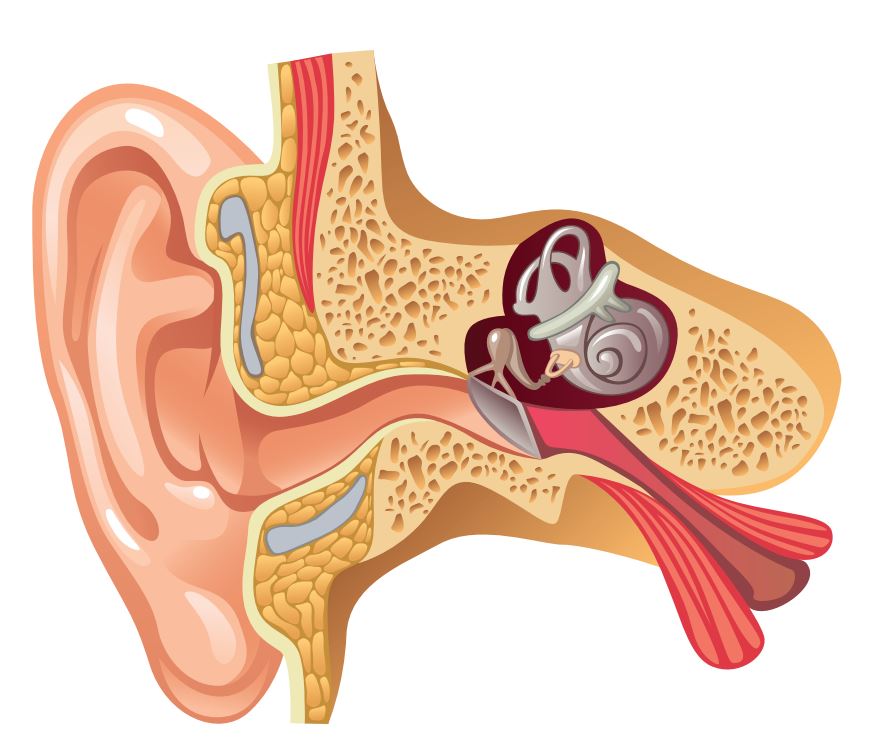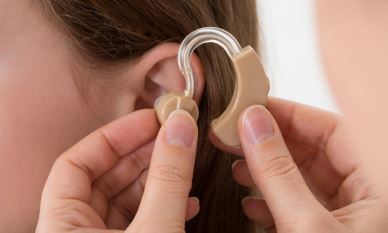Otosclerosis is a condition in which there is abnormal bone growth inside the ear. It’s a fairly common cause of hearing loss in young adults.
There are three tiny bones deep inside the ear, which vibrate when sound waves enter. They transmit sound waves to the cochlea (inner ear), which converts them into signals that are sent to the brain.
In otosclerosis, one of these three bones, the stapes (or “stirrup” bone), begins to fuse with the surrounding bone, eventually becoming fixed so it can’t move. This means sound is no longer transmitted into the inner ear efficiently.
CAUSES OF OTOSCLEROSIS
The exact cause of otosclerosis is unclear and it’s not known whether you can do anything to prevent it. Many cases seem to run in families and it is thought they may be the result of inheriting a faulty gene from a parent.

The condition can occasionally get worse more quickly during pregnancy, which may mean changes in hormone levels sometimes play a role.
SYMPTOMS OF OTOSCLEROSIS
Most people with otosclerosis notice hearing problems in their 20s or 30s. One or both ears can be affected.
Symptoms of otosclerosis include:
- Hearing loss that gets gradually worse over time;
- Particular difficulty hearing low, deep sounds and whispers;
- Speaking quietly because your voice sounds loud to you;
- Finding it easier to hear when there’s background noise (unlike many other types of hearing loss);
- Tinnitus (hearing sounds such as buzzing or humming that come from inside your body);
- Dizziness – though this is rare.
The symptoms of otosclerosis can be hard to tell apart from other causes of hearing loss.
IS OTOSCLEROSIS SERIOUS?
Otosclerosis can cause mild to severe hearing loss, but it very rarely causes total deafness.
Your hearing usually gets worse gradually over months or a few years, and may continue to get worse if ignored and left untreated.
But the hearing loss can normally be treated successfully with either hearing aids or surgery. Hearing is improved or restored in around 80 to 90% of people who have surgery.
Very occasionally, otosclerosis can spread to the inner ear, resulting in a greater level of hearing loss that can’t be improved with surgery.
WHEN TO GET MEDICAL ADVICE
See your doctor if you’re worried about your hearing. They will ask about your symptoms, examine your ears, take your medical history and may do some simple hearing tests.
If your doctor suspects a problem such as otosclerosis, you’ll be referred to an otorhinolaryngologist (ORL) also called ear, nose and throat (ENT) specialist.
The specialist will carry out some further hearing tests and possibly a scan of your head to help identify the problem.
TREATMENTS FOR OTOSCLEROSIS
Otosclerosis can usually be treated successfully with either a hearing aid or surgery. If your hearing loss is very mild, you may not need any treatment at first.
Hearing aids
A hearing aid is an electronic device that increases the volume of sound entering your ear so you can hear things more clearly.
The advantage of using a hearing aid is that, unlike surgery, it doesn’t carry any risks. Modern hearing aids are small and discreet, and some can be worn inside your ear so they’re not obvious.
You can talk to an audiologist about the different types of hearing aid available and which may be best for you.

Surgery
Surgery is an option if you would prefer not to wear a hearing aid. The main operation used is called a stapedotomy or stapedectomy.
The operation, called stapedectomy or stapedotomy, can be done under either general anaesthesia (you’re asleep) or local anaesthesia (you’re awake but your ear is numbed).
A cut is made inside your ear canal, or occasionally above or in front of your ear, to access the bones inside your ear.
Part of the stapes bone is removed and a plastic or metal implant is put into the ear to transmit sound from the remaining bones into the inner ear. You will be able to go home the same day or the day after.
This is a delicate operation that is usually very successful. Improvement in hearing may be apparent within three weeks of surgery. Maximum hearing, however, is obtained in approximately six months.
The degree of hearing improvement depends on how the ear heals. In the majority of patients the ear heals perfectly and hearing improvement is as anticipated. In some the hearing improvement is only partial or temporary. In these cases the ear usually may be re-operated upon with a good chance of success.
COMPLICATIONS OF STAPEDECTOMY
As with all operations, stapedectomy carries a small risk of complications. These include:
- Losing more or all of your hearing (in about 1 in 100 cases)
- Altered sense of taste (usually temporary)
- New or worsened tinnitus
- Vertigo (usually temporary)
- Facial weakness (very rare).
You can discuss the risks and benefits of both surgery and hearing aids with your surgeon to help you decide which you would prefer.
For more information, please contact:
OTORHINOLARYNGOLOGY DEPARTMENT (ORL)
FV Hospital, 1st Floor, V Building
Tel: (028) 54 11 33 33 – Ext: 7711



